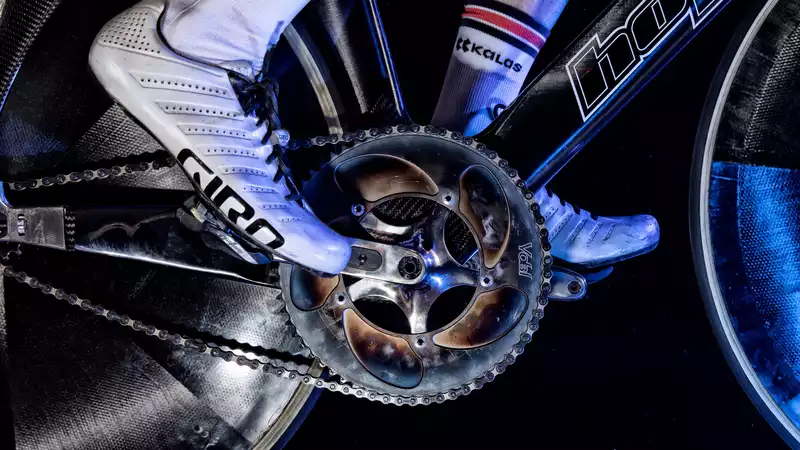Accurate power measurement has been at the forefront of cycling performance for some time now, and for many riders, the introduction of the best power meter is a landmark step in their cycling career. While many power meters are expensive purchases at several hundred pounds, Verve Cycling's new Infocrank 3D Ti sets a new standard in both the complexity of manufacture and eye-popping price in the power meter market. [Power pedals have rude pods, spider systems ruin the delicate flow of curves in cranksets, and crank arm systems often rely on external pods. What makes the new InfoCrank 3D Ti stand out in this regard is the almost seamless integration of strain gages. At first glance, this is very shiny and very attractive, but one would be forgiven for thinking that this is an otherwise unremarkable 5-arm track crankset.
To create this new crank-based power meter, Verve partnered with Metron Additive Manufacturing. The company is responsible for the famous 3D-printed titanium objects that adorn the bikes of Team GB's track team and are used by Team Sky/Ineos riders on the road.
"Additive manufacturing," in this case using metal rather than the more common plastic, simply creates an object in multiple small slices rather than through traditional casting or machining processes. In other words, the crank can be designed to accommodate torque measurement and electronics more neatly.
Verve claims "unmatched precision" for the titanium infocrank, but a closer look at the tech sheet shows that this is actually a bit vague <1%. Given that most new power meters, such as the new Wahoo Powrlink Zero pedals, aim for the industry standard that sits at +/- 1%, some additional qualification is needed to cement this claim.
. Data is acquired every 1/1000th of a second for cadence and 256 times per second for torque values. What makes the Infocrank 3D Ti stand out is that, thanks to the manufacturing process, the strain gauges are positioned to isolate only tangential forces (forces that move the rider forward). As a result, there is no need to rely on multiple measurements or algorithms, and no need for calibration or periodic zeroing prior to use.
Data is transmitted as usual via ANT+ to the device of your choice.
Frankly, the ubiquitous five-arm crank in the truck world doesn't leave much room for artistic flair. Nevertheless, the laminated molding process and polished finish make it look more organic than most cranksets.
Most of the design process seems to extend to the internals; 3D printing allows Verve and Metron to precisely control the internals, adding reinforcement where it is needed and not adding material where it is not needed. As a result, the system is lighter and also adjusts to the forces being used.
While the track cranks will be mounted on the ISIS bottom bracket, the road cranks, scheduled for release in the spring, are built around a 24mm spindle and can be used with many BB systems. Since the axle is claimed to be a unique design, it is expected that it will be 3D printed into the system rather than glued in place as is common.
Also, thanks to the manufacturing process, the cranks can be adapted to any rider with deep pockets to spare. The length you need, or the different left and right lengths to account for biomechanical discrepancies, are all possible if you pay for it.
There is no escaping the fact that this is a ridiculously expensive piece of kit; at 4,750 pounds, or about $6,450, it is more expensive than any other option on the market and would not be a realistic purchase for most users.
With their inclusion in the Team GB track team's Lotus x Hope HB.T and suggested applications in MTB and BMX, these are probably priced for those with national federation funding aiming for a small marginal gain and the commercial availability clause in the huge UCI rule book It is not unreasonable to conclude that it is important to meet ...
.

Comments